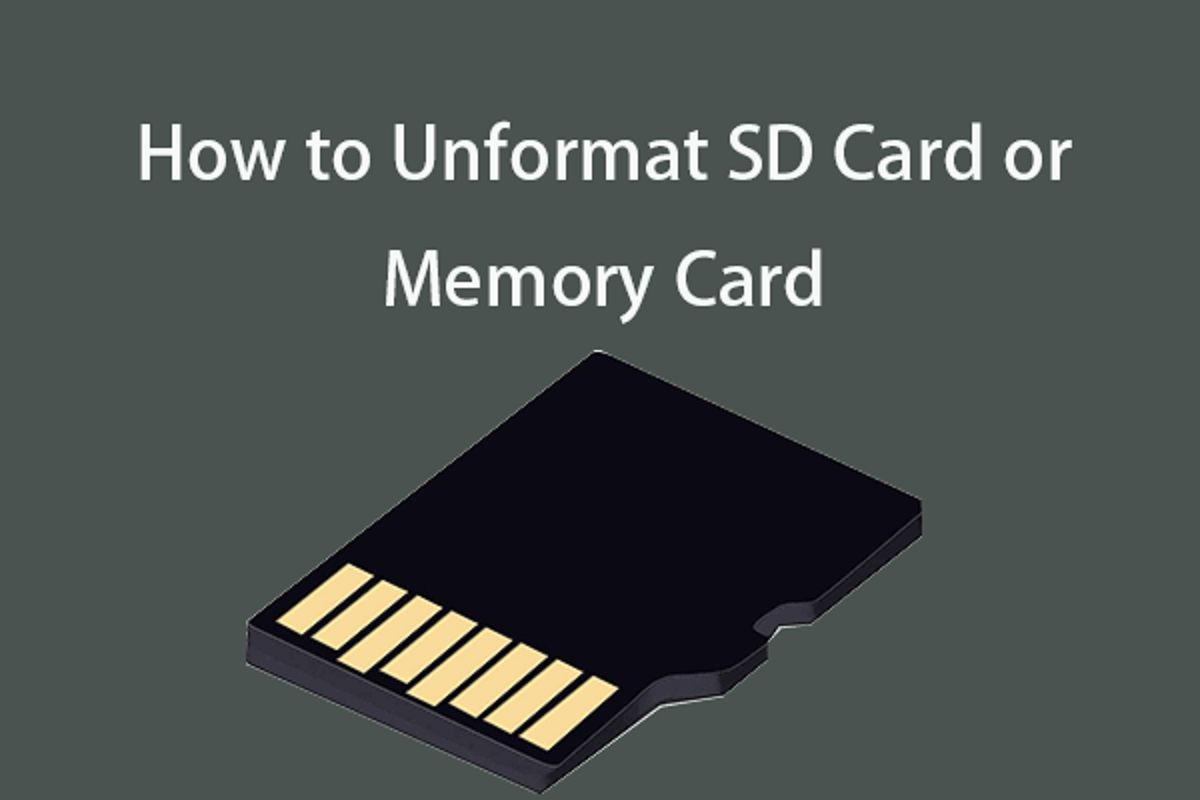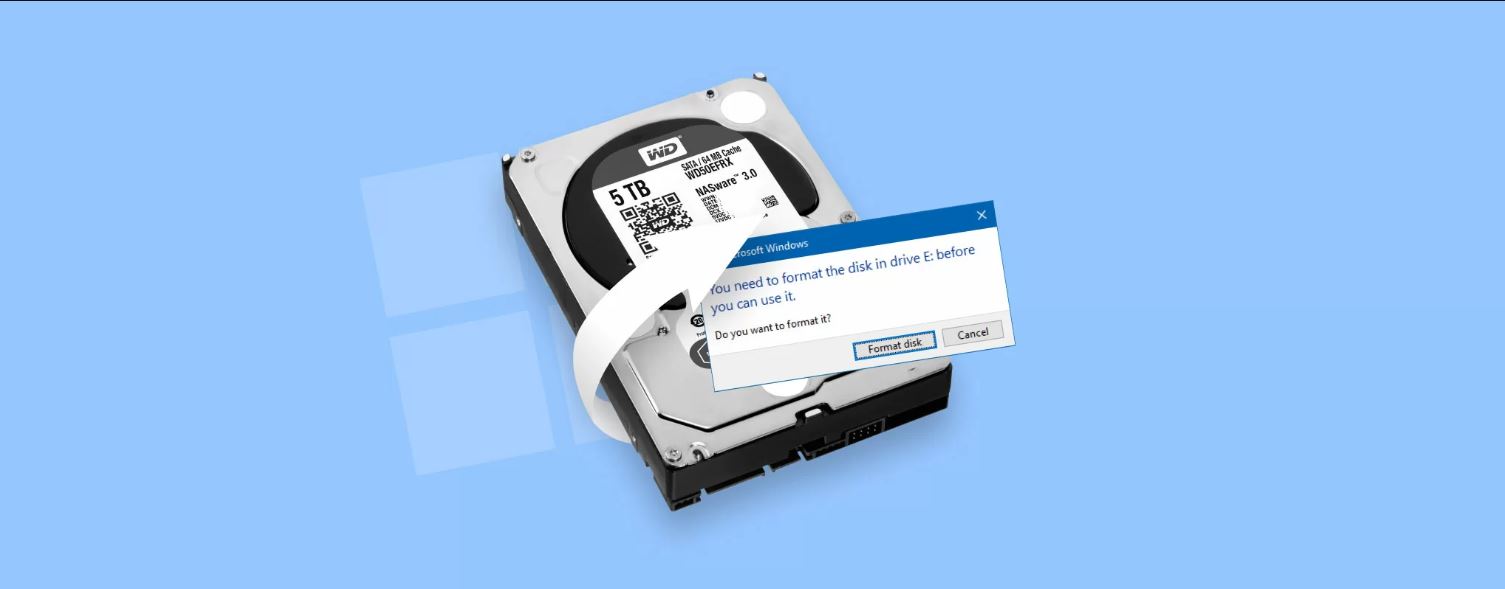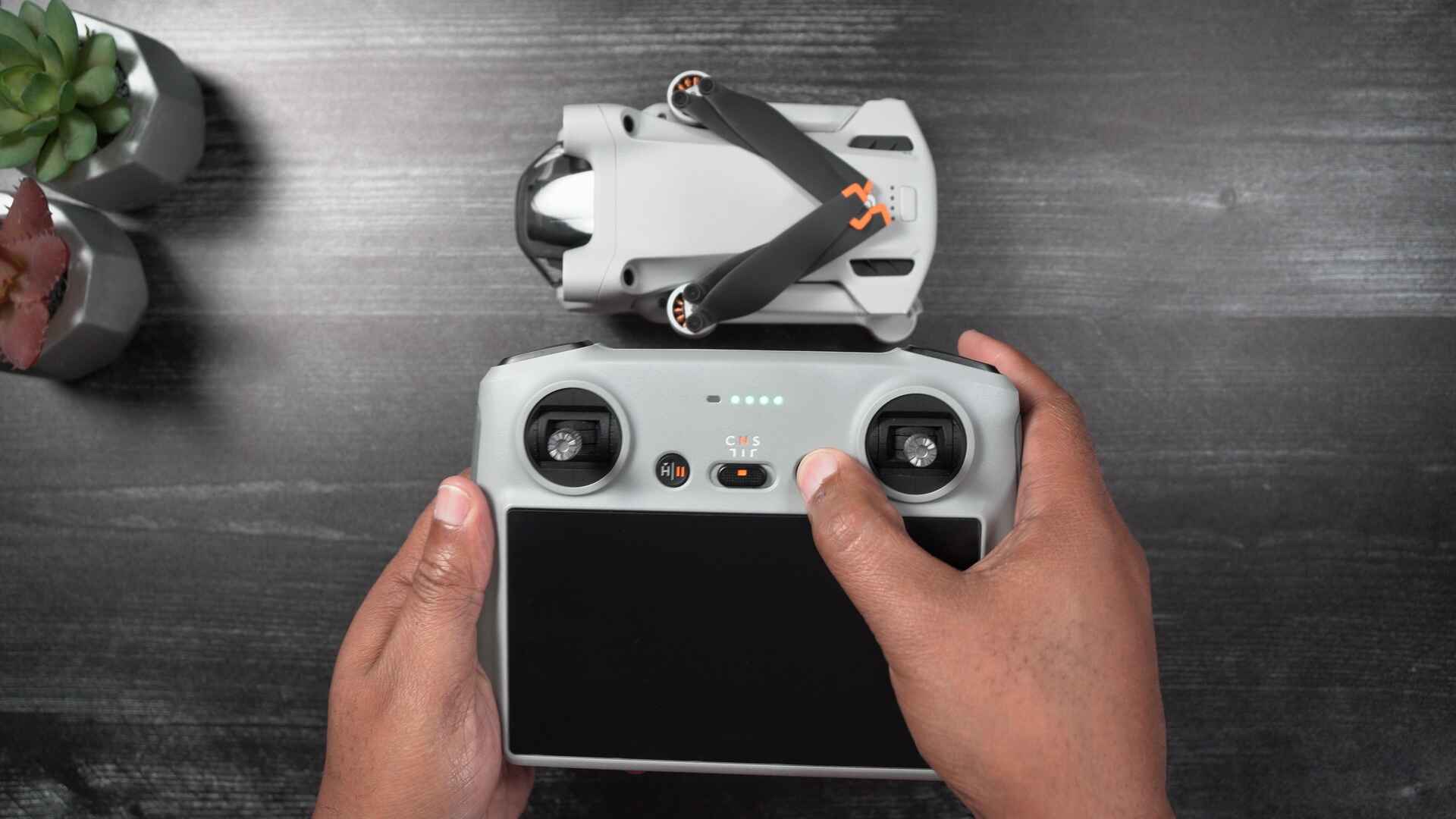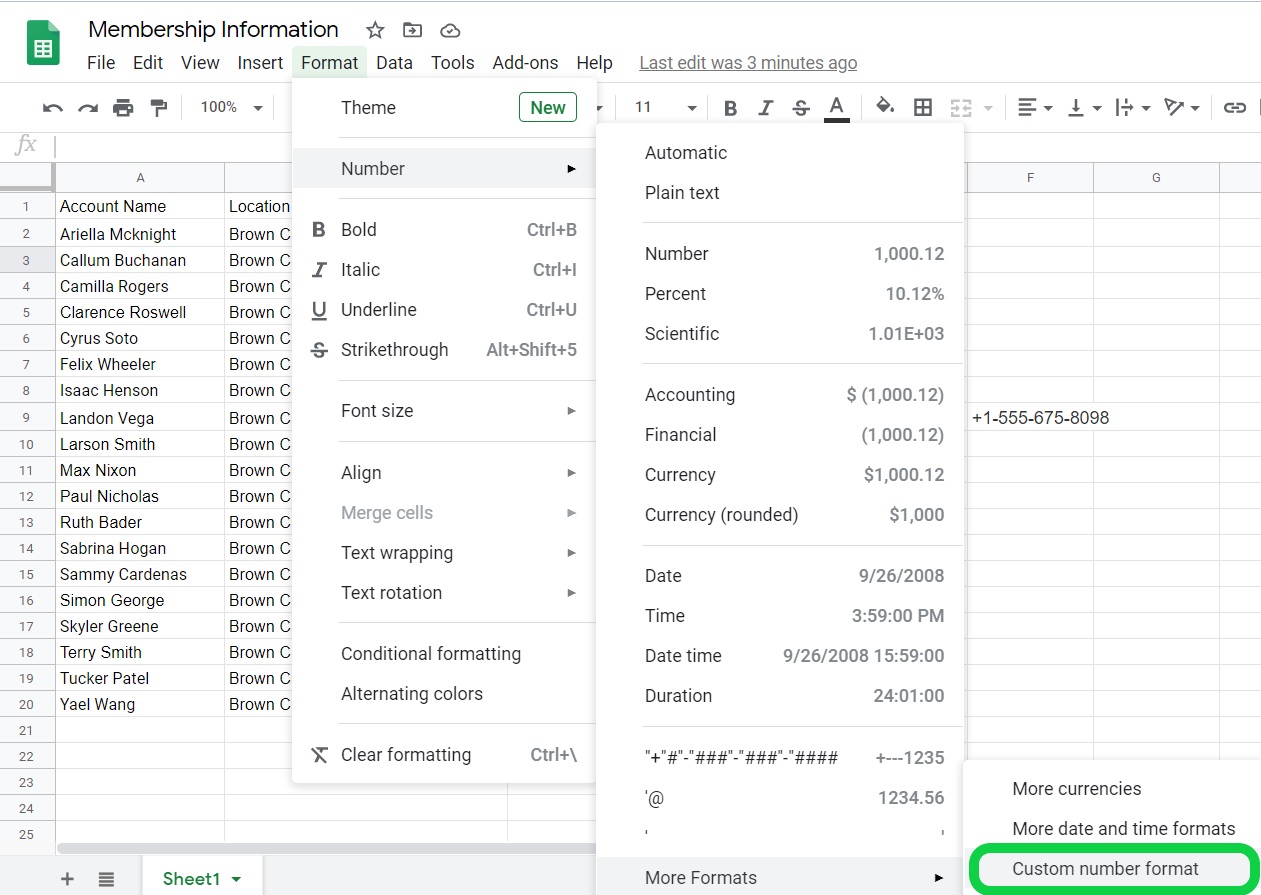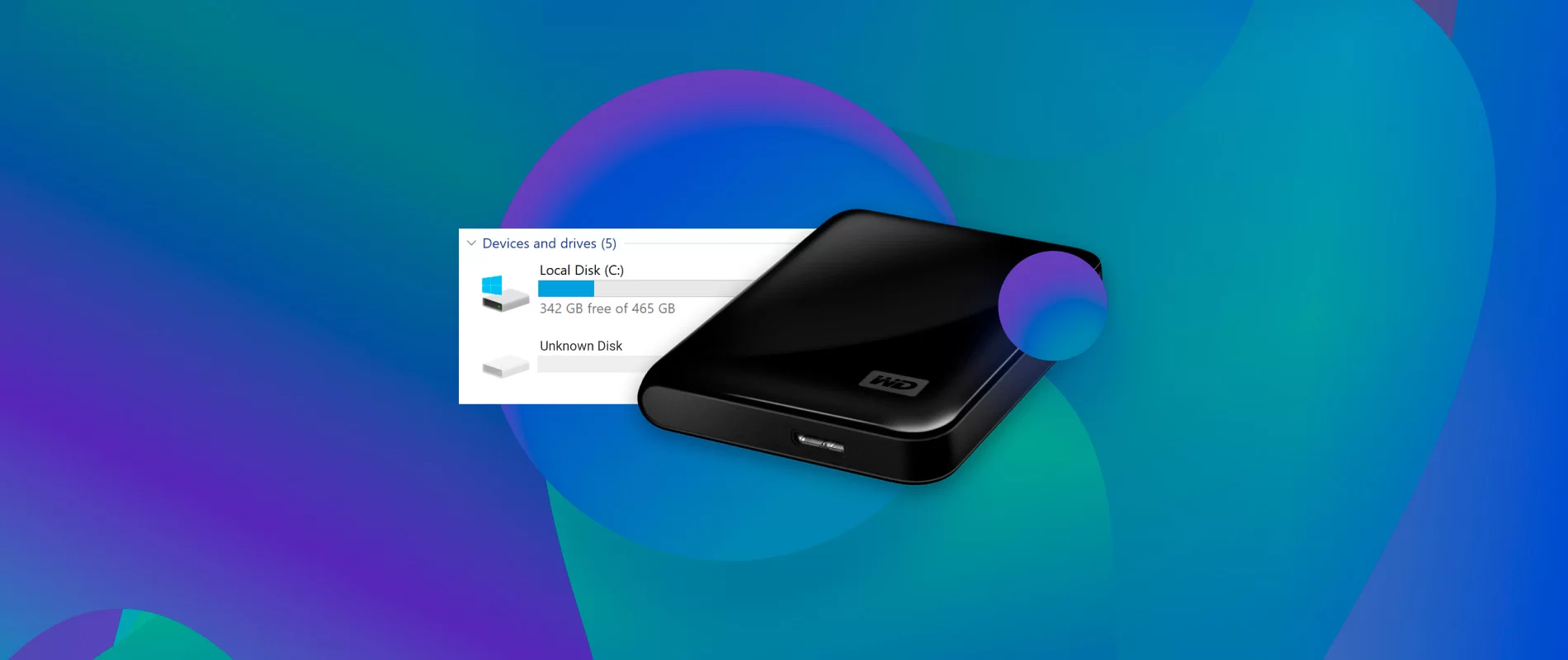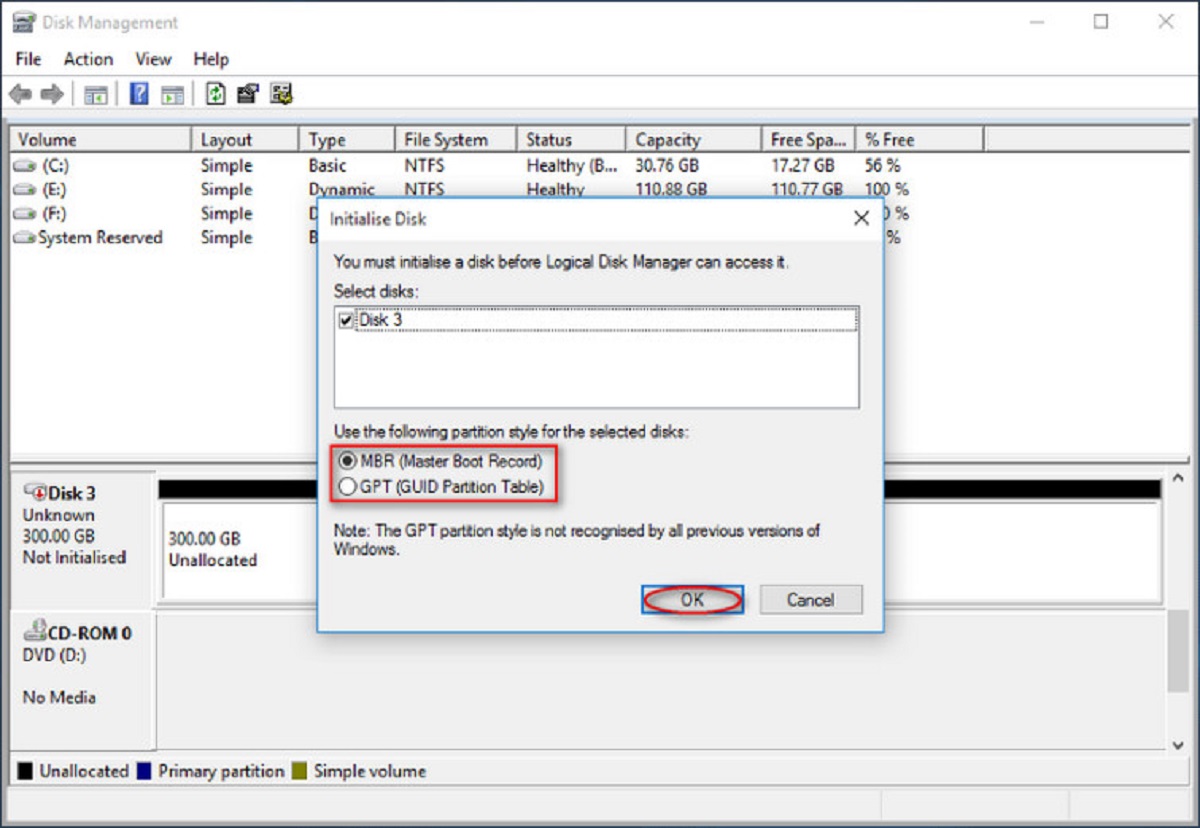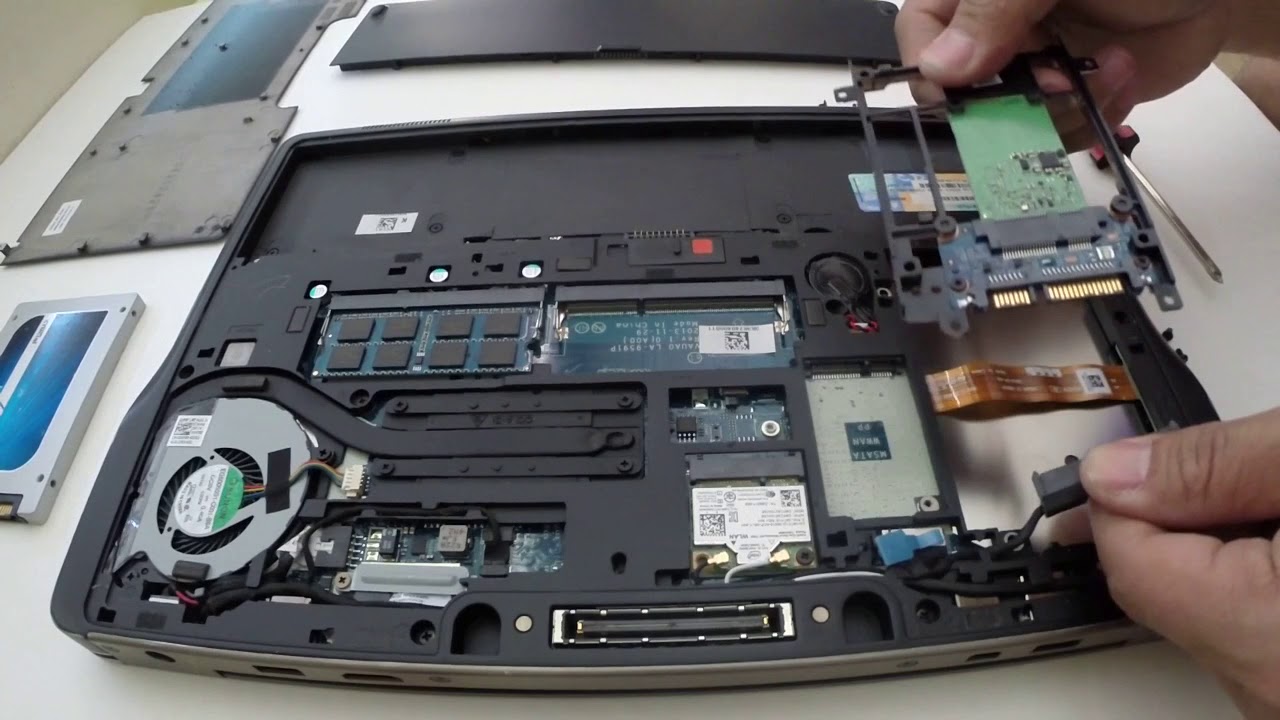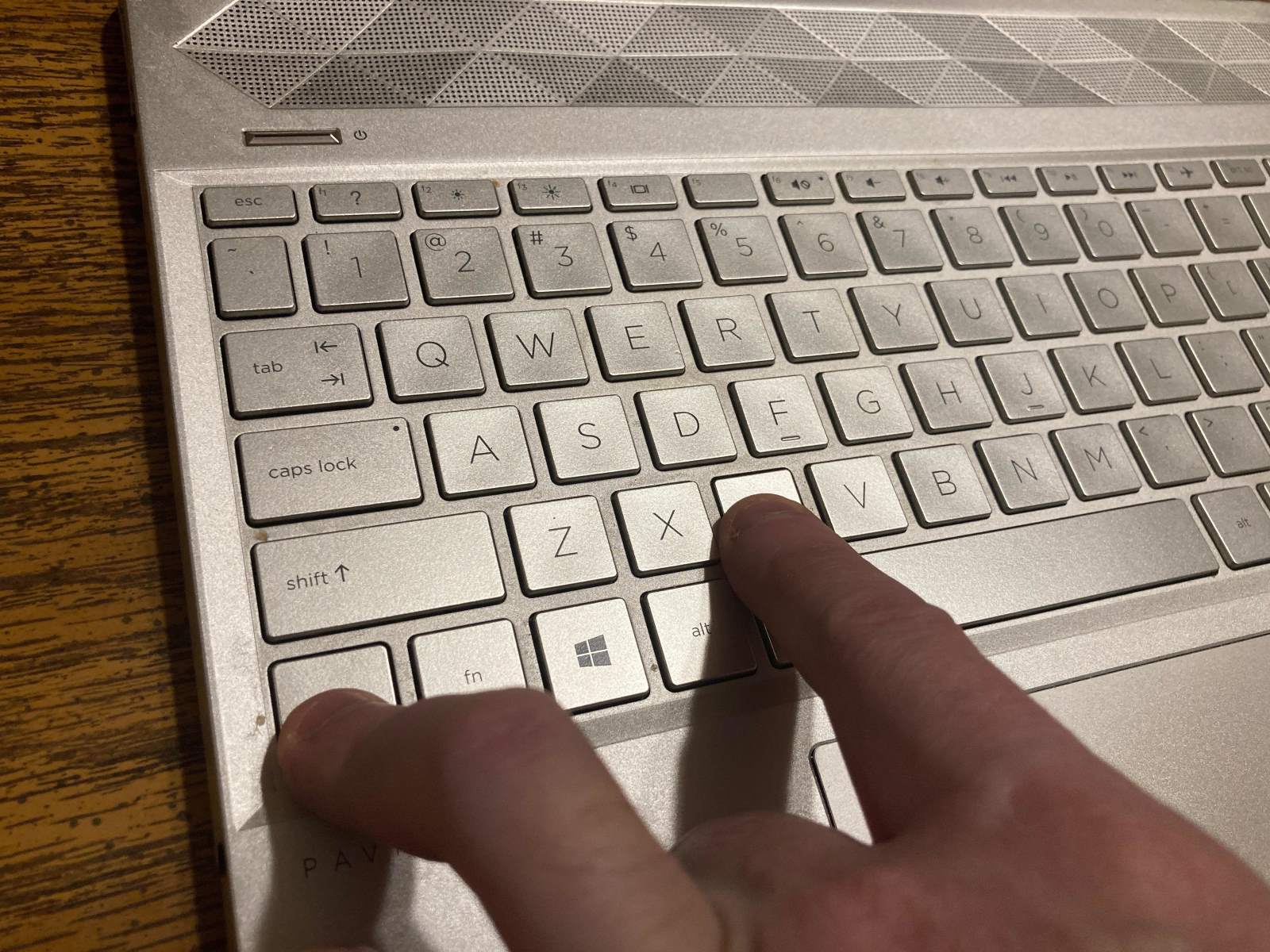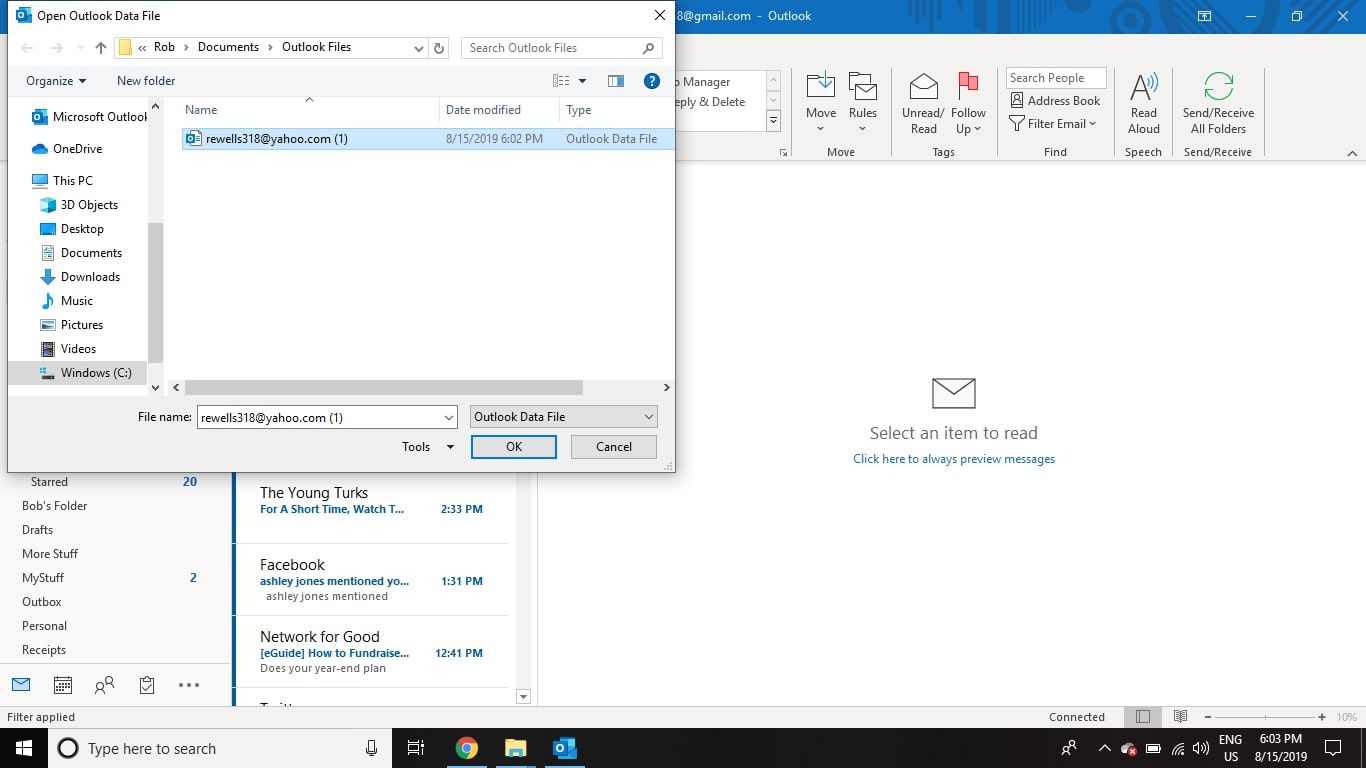Introduction
Welcome to this comprehensive guide on how to unformat an SD card. If you’ve accidentally formatted your SD card and lost all your precious data, don’t panic! Fortunately, there are methods to recover your files and restore your SD card to its original state. In this article, we will explore various techniques and tools that can help you recover your data and undo the formatting process.
An SD card is a popular storage medium used in a wide range of devices, such as digital cameras, smartphones, tablets, and more. It provides a convenient way to store photos, videos, documents, and other types of files. Unfortunately, formatting an SD card can lead to data loss, as it erases all the information stored on the card. This could be due to a simple mistake, accidental formatting, or even a corrupt file system.
While formatting is primarily done to prepare an SD card for use or to erase all the files on it, it is important to note that formatting does not actually erase the data completely. Instead, it marks the space on the card as available for new data. This means that if you act quickly, you may still be able to recover the files from a formatted SD card.
Before we dive into the methods of unformatting an SD card, it is essential to understand that the success of data recovery depends on various factors, such as the extent of formatting, length of time since formatting, and the actions taken after formatting. It is highly recommended to stop using the SD card immediately to prevent any overwriting of data.
In the following sections, we will discuss the different methods and tools you can use to recover data from a formatted SD card. It is important to note that these methods are meant to be performed by individuals who are familiar and comfortable with technical procedures. If you are unsure or uncomfortable with these methods, it may be best to seek professional assistance to avoid any further damage to the card or potential loss of data.
What is SD Card Formatting?
SD card formatting is the process of preparing an SD card to be used by a specific device or erasing all the data stored on the card. It involves reorganizing the file system on the card to optimize it for data storage and retrieval.
When an SD card is initially manufactured, it usually comes pre-formatted with a specific file system, such as FAT32 or exFAT. This ensures compatibility with a wide range of devices. However, in certain cases, you may need to format the SD card to a different file system that is compatible with your device or to remove all the data from the card.
Formatting can be done in two ways: quick format and full format. A quick format simply erases the file allocation table (FAT) and directory entries, making the card appear empty. The actual data is still present on the card but is marked as available space. On the other hand, a full format performs a more thorough erasure of the card by overwriting the data with zeros, effectively wiping it clean.
Despite its benefits, formatting an SD card can result in unintentional data loss if done without proper care or by mistake. This can happen when you format the wrong card, accidentally initiate a format process, or encounter issues during the formatting process.
It is important to note that formatting an SD card does not permanently erase the data. Instead, it removes the file system’s references to the data, making it appear as if the data is gone. However, until new data is written to the same sectors of the card, it is possible to recover the formatted data using specialized data recovery methods and software.
In the next sections, we will explore several methods and tools that can help you recover data from a formatted SD card. By following these techniques, you can increase your chances of successfully recovering your lost files and restoring your SD card to its previous state.
Is It Possible to Recover Data from a Formatted SD Card?
Yes, it is possible to recover data from a formatted SD card. When an SD card is formatted, the file system is reconfigured, but the actual data remains intact on the card until it is overwritten. This provides an opportunity to retrieve the lost data using specialized data recovery techniques.
However, the success of data recovery from a formatted SD card depends on various factors, such as the extent of the formatting, the length of time since formatting, and the actions taken after formatting. Here are a few factors to consider:
- Type of formatting: A quick format essentially deletes the file system’s references to the data, making it relatively easier to recover the files. A full format, on the other hand, overwrites the data with zeros, making recovery more challenging but not impossible.
- Length of time since formatting: The longer it has been since the formatting occurred, the more chances there are that the data may have been partially or completely overwritten. It is therefore crucial to act swiftly and avoid using the SD card to prevent further data loss.
- Actions taken after formatting: Any additional data written to the SD card after the formatting process will increase the risk of overwriting the original data and make recovery more difficult. It is essential to avoid saving new files or making any changes to the card.
To increase your chances of successful data recovery, it is recommended to use dedicated data recovery software or seek professional assistance. These tools employ advanced algorithms to scan the formatted SD card and recover the lost files based on their signatures and file structures. Some data recovery services also offer specialized techniques and equipment to recover data from physically damaged or corrupted SD cards.
It is important to note that while data recovery from a formatted SD card is possible, it is not guaranteed to be 100% successful in all cases. The outcome depends on various factors, including the specific circumstances and condition of the SD card.
In the following sections, we will explore different methods and tools that you can use to recover your data from a formatted SD card. It is important to remember that these methods should be performed with caution and, if necessary, seek professional assistance to avoid any further damage to the card or potential loss of data.
Tools Required for Recovering Data from a Formatted SD Card
When it comes to recovering data from a formatted SD card, you may need certain tools to increase your chances of successful recovery. These tools can aid in scanning the formatted card, identifying lost files, and restoring them to a safe location. Here are some essential tools that you may require:
- Data Recovery Software: One of the most important tools for data recovery is specialized data recovery software. There are various options available, both free and paid, that are designed to recover lost files from formatted storage devices. These software tools can scan the SD card, analyze its contents, and recover the lost data based on file signatures and structures. Some popular data recovery software includes EaseUS Data Recovery Wizard, Recuva, and Stellar Data Recovery.
- Card Reader: A card reader is required to connect the formatted SD card to your computer. It allows you to access the card’s data and perform the recovery process. You can use an external card reader that connects via USB or use the built-in card reader on your computer or laptop.
- Computer or Laptop: You will need a computer or laptop with sufficient storage space to restore the recovered files. It should also have a compatible operating system that supports the data recovery software you are using.
- Backup Storage: It is advisable to have a separate storage device or location to save the recovered files. This will help avoid overwriting any existing data and provide a safe place to store the recovered files until you can transfer them to a permanent location.
- Protective Packaging: If you are planning to send your formatted SD card to a professional data recovery service, it is essential to use protective packaging to prevent physical damage during transit. Use an anti-static bag or a padded envelope to protect the card and ensure its safe arrival at the service provider.
It is important to note that the specific tools required may vary depending on the data recovery method you choose. Different software may have different system requirements, and some advanced recovery techniques may require additional specialized tools and equipment.
Before proceeding with data recovery, ensure that you have all the necessary tools readily available. It is also a good practice to read the instructions provided with the data recovery software and familiarize yourself with the recovery process.
In the following sections, we will explore different data recovery methods that you can use to recover your lost data from a formatted SD card. Each method may require specific tools, so make sure to choose the one that suits your situation and comfort level.
Method 1: Using Data Recovery Software
One of the most popular and effective methods of recovering data from a formatted SD card is by using specialized data recovery software. These software tools are designed to scan the formatted card and retrieve the lost files based on their file signatures and structures. Here is a step-by-step guide on how to use data recovery software to recover your data:
- Choose a Reliable Data Recovery Software: Research and select a reputable data recovery software that is known for its success in recovering data from formatted storage devices. Consider factors such as user reviews, features, compatibility, and ease of use.
- Connect the SD Card to your Computer: Use a card reader to connect the formatted SD card to your computer. Ensure that the card reader is properly connected and recognized by your computer.
- Install and Launch the Data Recovery Software: Follow the instructions provided by the software’s installer to install the software on your computer. Once installed, launch the software.
- Select the Formatted SD Card: From the list of available drives or devices, select the formatted SD card that you want to recover data from. Make sure to choose the correct SD card to avoid accidental data loss.
- Choose the Recovery Mode: Most data recovery software offers different recovery modes, such as Quick Scan and Deep Scan. Start with the Quick Scan mode, as it will provide faster results. If the Quick Scan doesn’t retrieve your files, you can then proceed with the Deep Scan mode.
- Scan and Analyze the SD Card: Initiate the scanning process and let the data recovery software scan and analyze the formatted SD card. This process may take some time, depending on the size and condition of the card.
- Preview and Recover the Lost Files: Once the scanning process is complete, the data recovery software will display a list of recoverable files. Preview the files to ensure their integrity and select the ones you want to recover. Choose a safe location on your computer or an external storage device to save the recovered files.
- Perform Additional Recovery if Needed: In case the Quick Scan does not retrieve all your lost files, you can perform a Deep Scan to search for deeper and more fragmented files. Follow the prompts provided by the data recovery software to initiate the Deep Scan.
It is important to note that the success of data recovery using software depends on various factors, such as the extent of formatting and the condition of the SD card. If the software fails to recover your desired files, you may consider using alternative data recovery methods or seeking professional assistance.
Remember to immediately save the recovered files to a separate location to prevent overwriting any existing data on your computer or the SD card. It is also advisable to follow the instructions provided by the data recovery software and take appropriate measures to avoid any potential data loss during the recovery process.
In the next section, we will explore another method to recover data from a formatted SD card using the Command Prompt (for Windows users).
Method 2: Using Command Prompt (for Windows)
If you are using a Windows operating system, you can utilize the Command Prompt to recover data from a formatted SD card. The Command Prompt offers a built-in tool called “chkdsk” (Check Disk) that can help repair file system errors and recover lost data. Follow these steps to use the Command Prompt for data recovery:
- Connect the SD Card to your Computer: Use a card reader to connect the formatted SD card to your Windows computer. Ensure that the card reader is properly connected and recognized by your computer.
- Open Command Prompt: Open the Command Prompt by pressing the Windows key + R on your keyboard to open the Run dialog box. Type “cmd” and press Enter, or search for “Command Prompt” in the Start menu and click on it.
- Navigate to the SD Card: In the Command Prompt window, type the drive letter associated with your SD card, followed by a colon (:). For example, if your SD card is assigned the drive letter “E,” type “E:” and press Enter. You will now be in the SD card’s directory.
- Run the chkdsk Command: In the Command Prompt, type the following command and press Enter: “chkdsk /f /r”. This will initiate the chkdsk utility with the “fix” and “recovery” options.
- Wait for the Process to Complete: The chkdsk utility will start scanning the SD card for errors and attempt to recover any lost data. This process may take some time, depending on the size and condition of the card.
- Recover the Recovered Files: Once the chkdsk process is complete, check if any recovered files are displayed. If the utility has successfully recovered any files, they will be saved in a folder named “Found” or “Recovered” in the directory. Copy these files to a safe location on your computer or an external storage device.
- Perform Additional Recovery Methods if Needed: If the chkdsk utility does not retrieve your desired files or if you want to explore alternative recovery methods, you can consider using data recovery software or seeking professional assistance.
Keep in mind that the success of data recovery using the Command Prompt method depends on various factors, such as the extent of formatting and the condition of the SD card. It is recommended to back up the recovered files immediately to prevent overwriting any existing data on your computer or the SD card.
Using the Command Prompt for data recovery requires some technical knowledge, so ensure that you follow the instructions correctly. If you are uncomfortable with Command Prompt commands or if the chkdsk utility fails to recover your data, you may wish to explore other recovery methods or seek professional assistance.
In the next section, we will discuss another method for recovering data from a formatted SD card using the Terminal (for Mac users).
Method 3: Using Terminal (for Mac)
If you are using a Mac computer, you can utilize the Terminal application to recover data from a formatted SD card. Terminal provides access to various command-line tools that can be used for data recovery purposes. Follow these steps to use Terminal for data recovery:
- Connect the SD Card to your Mac: Use a card reader to connect the formatted SD card to your Mac computer. Ensure that the card reader is properly connected and recognized by your Mac.
- Open Terminal: Open Terminal by navigating to Applications > Utilities > Terminal. Alternatively, you can use Spotlight Search and type “Terminal” to open it.
- Identify the SD Card: In Terminal, type the command “diskutil list” and press Enter. This will display a list of all the disks and volumes connected to your Mac. Identify the entry associated with your SD card, usually labeled as “/dev/diskX” (where X is a number).
- Unmount the SD Card: In Terminal, type the command “diskutil unmountDisk /dev/diskX” (replace “X” with the number associated with your SD card) and press Enter. This will unmount the SD card and make it available for further operations.
- Create a Disk Image: In Terminal, type the command “sudo dd if=/dev/rdiskX bs=4096 | pv | dd of=/path/to/save/diskimage.dmg” (replace “X” with the number associated with your SD card and “/path/to/save” with the desired location on your Mac where you want to save the disk image). Press Enter and provide your administrator password when prompted. This command creates a disk image of the SD card that you can later recover data from.
- Mount the Disk Image: In Terminal, type the command “hdiutil attach /path/to/save/diskimage.dmg” (replace “/path/to/save” with the actual path where you saved the disk image) and press Enter. This will mount the disk image and make it accessible as a separate volume on your Mac.
- Recover the Lost Files: Once the disk image is mounted, you can navigate to it using the Finder application. Locate the recovered files within the mounted disk image and copy them to a safe location on your Mac or an external storage device for further use.
- Eject the SD Card and Unmount the Disk Image: In Terminal, run the command “diskutil eject /dev/diskX” (replace “X” with the number associated with your SD card) to safely eject the SD card. Then, unmount the disk image by right-clicking on it in Finder and selecting “Eject”.
It is important to note that using Terminal for data recovery requires some technical knowledge, and the process can be complex. Make sure to follow the instructions accurately and double-check all commands before executing them. If you are uncomfortable with Terminal commands or if the recovery process does not retrieve your desired files, consider using alternative recovery methods or seeking professional assistance.
Remember to immediately back up the recovered files to prevent overwriting any existing data. It is always recommended to store the recovered files in a separate location on your Mac or an external storage device.
In the following section, we will discuss another data recovery method using third-party data recovery services.
Method 4: Using Third-Party Data Recovery Services
If you are unable to recover your data from a formatted SD card using the previously mentioned methods, or if you are not comfortable performing the data recovery process yourself, you can consider using third-party data recovery services. These services specialize in recovering data from various storage devices, including formatted SD cards. Here’s how to use third-party data recovery services:
- Research and Choose a Reliable Data Recovery Service: Look for reputable data recovery service providers with a track record of successfully recovering data from formatted SD cards. Compare their services, reputation, pricing, and customer reviews to make an informed decision.
- Contact the Data Recovery Service: Get in touch with the selected data recovery service and provide them with the details of your formatted SD card and the data loss situation. They will guide you through the process and provide instructions on how to proceed.
- Package and Ship the SD Card: If the data recovery service agrees to assist you, carefully package your formatted SD card using appropriate padding and anti-static materials. Follow the shipping instructions provided by the service and send the package to their designated address.
- Recovery Evaluation: Upon receiving the SD card, the data recovery service will perform an evaluation to determine if they can successfully recover your data. This evaluation may include a physical inspection of the card, data extraction attempts, and a report of the recoverable data.
- Data Recovery Process: If the evaluation is successful, the data recovery service will proceed with the actual data recovery process. They will use specialized equipment, tools, and techniques to extract and recover the lost data from the formatted SD card.
- Delivery of Recovered Data: Once the data recovery process is complete, the service will provide you with the recovered data. This can typically be delivered via a secure online portal, encrypted storage device, or shipped to you on a physical storage medium.
- Payment and Service Guarantees: Pay the service fees as agreed upon and review any service guarantees or warranties offered by the data recovery service. Be sure to save and backup the recovered data immediately to prevent any future data loss.
Using a third-party data recovery service can be a viable option when other methods don’t yield the desired results. These services often have specialized expertise and equipment to handle complex data recovery scenarios, including recovering data from heavily formatted SD cards or physically damaged media.
Keep in mind that data recovery services vary in terms of pricing, success rates, and turnaround times. It is essential to choose a reputable service provider to ensure the best chances of recovering your lost data.
In the next section, we will provide some useful tips to prevent data loss and avoid the need for data recovery in the future.
Tips to Prevent Data Loss in the Future
Data loss can be a frustrating experience, but with proper precautions, you can minimize the risk of losing your valuable files. Here are some useful tips to prevent data loss in the future:
- Regularly Back Up Your Data: Create and maintain regular backups of your important files. Use external hard drives, cloud storage services, or automatic backup software to ensure your data is securely stored in multiple locations.
- Be Cautious with Formatting: Double-check the storage device before initiating the formatting process. Avoid accidental formatting by taking your time and selecting the correct drive or card.
- Use Write Protection: Most SD cards come with a write protection switch that prevents accidental overwriting or formatting. Before performing any operations that may modify the card’s data, ensure the write protection switch is enabled.
- Avoid Abrupt Removal: Safely eject storage devices, including SD cards, before physically disconnecting them from your computer. Abruptly removing the card while data is being written or read can lead to file system errors or data corruption.
- Keep Devices and Cards Clean: Protect your devices and SD cards from dust, moisture, and physical damage. Regularly clean your devices and use protective cases or sleeves for SD cards to prevent any potential harm.
- Scan for Malware: Run regular antivirus scans on your computer to detect and remove any potential malware that can cause data loss or corruption.
- Keep Software Updated: Keep your operating system, drivers, and applications up to date to ensure they have the latest security patches and bug fixes. Outdated software can sometimes lead to data loss due to compatibility issues or vulnerabilities.
- Handle SD Cards with Care: Avoid bending, dropping, or subjecting SD cards to extreme temperatures. Treat them delicately to prevent physical damage that can render them unusable or result in data loss.
- Label and Organize Your SD Cards: Clearly label your SD cards to avoid confusion and misplacement. Proper organization and storage will help prevent accidental formatting or loss of important files.
- Pay Attention to Warning Signs: If your devices or SD cards start exhibiting abnormal behavior, such as slow performance, frequent errors, or strange noises, address these warning signs promptly. It could indicate potential hardware or software issues that may lead to data loss.
By following these tips, you can significantly reduce the risk of data loss and ensure the safety of your valuable files. Prevention is always better than recovery, so take the necessary precautions to protect your data.
While these measures can greatly minimize the chances of data loss, it is important to remember that no method is foolproof. In the event of data loss, it is recommended to stop using the affected storage device immediately and seek professional data recovery services or utilize appropriate data recovery software to maximize the chances of successful recovery.
In this article, we have explored various methods and tools to recover data from a formatted SD card. Whether you choose data recovery software, Command Prompt, Terminal, or professional services, remember to act swiftly and cautiously to increase your chances of successfully retrieving your lost files.
Conclusion
Accidentally formatting an SD card can be a distressing experience, but it is important to remember that there are methods to recover your lost data. Throughout this guide, we have explored different techniques and tools that can help you retrieve your files and undo the formatting process.
From using data recovery software to leveraging the power of the Command Prompt (for Windows users) or Terminal (for Mac users), there are various approaches you can take to recover your formatted SD card. Additionally, if you are not comfortable performing the recovery yourself or other methods prove unsuccessful, third-party data recovery services can provide specialized assistance.
While these methods offer possibilities for data recovery, it is crucial to act swiftly and avoid using the SD card to prevent further data loss. Remember, the success of data recovery depends on factors such as the extent of formatting, the length of time since formatting, and the actions taken after formatting.
To prevent future data loss, implement preventative measures such as regular backups, careful handling of devices and SD cards, and maintaining up-to-date software. By following these tips, you can minimize the risk of data loss and protect your valuable files.
If you find yourself facing data loss, it is important to remain calm and seek appropriate methods or professional assistance. By staying informed and utilizing the appropriate tools and techniques, you can increase your chances of successfully recovering your data from a formatted SD card.
I hope this guide has provided you with valuable insights and guidance on how to recover data from a formatted SD card. Remember to always act with caution, patience, and proper understanding of the methods and tools you choose to employ in your data recovery efforts.







